第50章 SYMPATHY(1)
Imitation--compassion--sympathy, these are imperfect designations for a common bond of union among human beings--for an instinct which connects individuals with the general body, which embraces with equal force reason and folly, good and evil, and diminishes the praise of virtue as well as the criminality of vice.In this impulse there are degrees, but no essential differences, from the first intellectual efforts of the infant mind, which are in a great measure based on imitation, to that morbid condition of the soul in which the sensible impression of a nervous malady fetters the mind, and finds its way through the eye directly to the diseased texture, as the electric shock is propagated by contact from body to body.To this instinct of imitation, when it exists in its highest degree, is united a loss of all power over the will, which occurs as soon as the impression on the senses has become firmly established, producing a condition like that of small animals when they are fascinated by the look of a serpent.
By this mental bondage morbid sympathy is clearly and definitely distinguished from all subordinate degrees of this instinct, however closely allied the imitation of a disorder may seem to be to that of a mere folly, of an absurd fashion, of an awkward habit in speech and manner, or even of a confusion of ideas.Even these latter imitations, however, directed as they are to foolish and pernicious objects, place the self-independence of the greater portion of mankind in a very doubtful light, and account for their union into a social whole.Still more nearly allied to morbid sympathy than the imitation of enticing folly, although often with a considerable admixture of the latter, is the diffusion of violent excitements, especially those of a religious or political character, which have so powerfully agitated the nations of ancient and modern times, and which may, after an incipient compliance, pass into a total loss of power over the will, and an actual disease of the mind.Far be it from us to attempt to awaken all the various tones of this chord, whose vibrations reveal the profound secrets which lie hid in the inmost recesses of the soul.We might well want powers adequate to so vast an undertaking.Our business here is only with that morbid sympathy by the aid of which the dancing mania of the Middle Ages grew into a real epidemic.In order to make this apparent by comparison, it may not be out of place, at the close of this inquiry, to introduce a few striking examples:-1."At a cotton manufactory at Hodden Bridge, in Lancashire, a girl, on the fifteenth of February, 1787, put a mouse into the bosom of another girl, who had a great dread of mice.The girl was immediately thrown into a fit, and continued in it, with the most violent convulsions, for twenty-four hours.On the following day three more girls were seized in the same manner, and on the 17th six more.By this time the alarm was so great that the whole work, in which 200 or 300 were employed, was totally stopped, and an idea prevailed that a particular disease had been introduced by a bag of cotton opened in the house.On Sunday the 18th, Dr.St.
Clare was sent for from Preston; before he arrived three more were seized, and during that night and the morning of the 19th, eleven more, making in all twenty-four.Of these, twenty-one were young women, two were girls of about ten years of age, and one man, who had been much fatigued with holding the girls.Three of the number lived about two miles from the place where the disorder first broke out, and three at another factory at Clitheroe, about five miles distant, which last and two more were infected entirely from report, not having seen the other patients, but, like them and the rest of the country, strongly impressed with the idea of the plague being caught from the cotton.The symptoms were anxiety, strangulation, and very strong convulsions; and these were so violent as to last without any intermission from a quarter of an hour to twenty-four hours, and to require four or five persons to prevent the patients from tearing their hair and dashing their heads against the floor or walls.Dr.St.Clare had taken with him a portable electrical machine, and by electric shocks the patients were universally relieved without exception.
As soon as the patients and the country were assured that the complaint was merely nervous, easily cured, and not introduced by the cotton, no fresh person was affected.To dissipate their apprehensions still further, the best effects were obtained by causing them to take a cheerful glass and join in a dance.On Tuesday the 20th, they danced, and the next day were all at work, except two or three, who were much weakened by their fits."The occurrence here described is remarkable on this account, that there was no important predisposing cause for convulsions in these young women, unless we consider as such their miserable and confined life in the work-rooms of a spinning manufactory.It did not arise from enthusiasm, nor is it stated that the patients had been the subject of any other nervous disorders.In another perfectly analogous case, those attacked were all suffering from nervous complaints, which roused a morbid sympathy in them at the sight of a person seized with convulsions.This, together with the supervention of hysterical fits, may aptly enough be compared to tarantism.